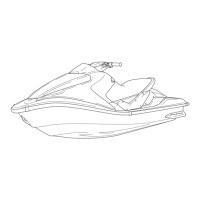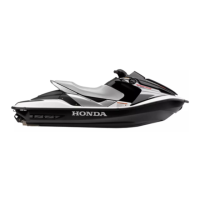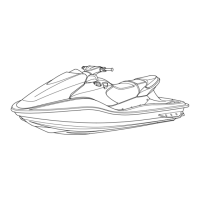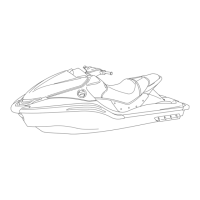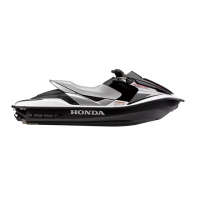Do you have a question about the Honda ARX1200T3 2004 and is the answer not in the manual?
Explains safety alert symbols, signal words, and the meaning of safety labels on the PWC.
Covers core safety guidelines, collision avoidance, defensive riding, and protective gear.
Identifies and illustrates key physical components of the PWC.
Details the dashboard display, meters, and warning indicators like oil pressure and battery voltage.
Details specific controls such as ID Lock System, Limit Mode, Start/Stop buttons, levers, and eyelets.
Covers evaluating operator readiness, protective apparel, and the importance of certified training.
Guides on pre-ride inspections, load limits, loading guidelines, and cargo compartment details.
Covers safe riding precautions, PWC propulsion, and navigation rules for safe operation.
Details procedures for starting, stopping, handling flooded engines, and launching/boarding the PWC.
Covers first rides, turning, OTS, reverse operation, stopping, docking, and beaching.
Guidelines for safely carrying passengers or cargo, and towing a water skier safely.
Procedures for cleaning and maintaining the PWC after use to ensure good condition.
Explains the significance of maintenance, safety precautions, and the service schedule.
Covers preparations like tool kit, manual storage, seat removal, and detailed procedures for various systems.
Provides procedures for properly storing the PWC for extended periods.
Guidelines for safely securing and transporting the PWC on a trailer.
Offers advice on environmentally responsible PWC ownership and practices.
General advice for handling issues, prioritizing safety, and making temporary repairs.
Troubleshooting steps for engine starting problems, overheating, and low oil pressure.
Addresses blown fuses, collision procedures, and towing requirements.
Steps to take if the PWC capsizes or becomes submerged to prevent engine damage.
How to clear intake clogs and troubleshoot low or dead battery problems.
Covers serial numbers, HIN, color labels, and technical data like dimensions and capacities.
Details break-in guidelines, emission control systems, star labels, and oxygenated fuels.
Information on authorized manuals, warranty coverage, service, contacting Honda, and dealer services.
Instructions for reporting safety defects to the U.S. Coast Guard.
| Manufacturer | Honda |
|---|---|
| Model | ARX1200T3 |
| Year | 2004 |
| Category | Boat |
| Starter | Electric |
| Lubrication System | Wet Sump |
| Engine Type | 4-Stroke |
| Fuel System | PGM-FI |
| Shaft Length | 20 in |
| Exhaust | Through Propeller |
